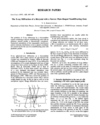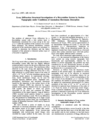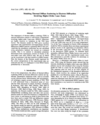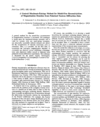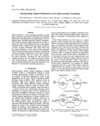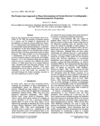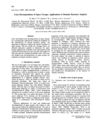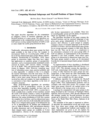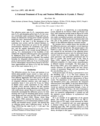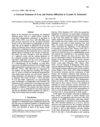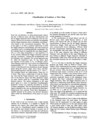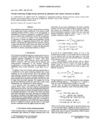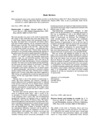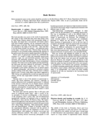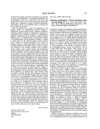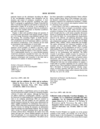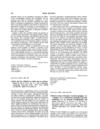issue contents
July 1997 issue

Cover illustration: A structural model of the decagonal Al-Pd-Mn quasicrystal, which consists of clusters represented by decagons and ten pentagons surrounding each decagon. This is obtained from a periodic structure in five-dimensional space by taking a three-dimensional section. Courtesy of A. Yamamoto.
research papers
The problem of X-ray diffraction by a bicrystalline system containing a narrow nondiffracting zone with an arbitrary smooth profile is theoretically considered.
The problem of spherical X-ray diffraction by a bicrystalline system with a thin surface layer is theoretically considered for a Laue set-up in the case μ t ≫ 1 under the condition of the existence of a crystal lattice mismatch.
Interatomic potential parameters obtained via empirical fitting techniques provide good agreement between predicted and experimentally derived structural parameters for a range of alkali chlorate and bromate salts.
This paper discusses features of the Einstein model for thermal diffuse scattering that are important for the correct interpretation of convergent-beam electron diffraction patterns containing higher-order Laue-zone lines.
The principle of maximum entropy is applied to the problem of spin-density reconstructions in non-centrosymmetric crystal structures,leading to a general algorithm that should be useful for reconstructingspin densities in virtually any physical system.
The tangent formula is an efficient means of phase refinement for small structures (<100 atoms) in the context of the Shake-and-Bake procedure. Parameter shift is a more robust phase-refine- ment method for larger structures.
Rescaling of low-resolution protein diffraction intensities by pseudo-atom `globular' scattering factors can facilitate ab initio structure determination.
Coset decomposions of space groups are systematically ana- lyzed. An efficient method has been developed, which exploits the specific structure of space groups, to determine for any group–subgroup relation of space groups minimal sets of double-coset representatives and to decompose double cosets into their left cosets. The results are applied in general and in terms of a concrete example to describe the domain structure analysis in structural phase transitions.
Algorithms for the computation of maximal subgroups and Wyckoff positions of space groups are given. Implementations of these algorithms are made publicly available.
With an algebraic method, partial structures of anomalous scatterers are determined using multiple-wavelength data from central reciprocal-lattice rows. For centrosymmetric structures, a new determinant evaluates all sign variations, thus finding all possible structures and perhaps the only `true' one within the error limits induced by the quality of experimental data.
A general set of solutions of the power transfer equations describing the diffraction in crystal plates is established and the result is in very good agreement with experiment. It is found that the standard formulae in International Tables for Crystallography for the integrated reflection are just the limiting cases of exact solutions.
Exact expressions for secondary-extinction factors for a plane crystal are obtained from the results of the previous paper. and the refinement of the LiF and MgO experiments with this formalism with all the strongest reflections (Y 0 down to 0.026) included shows that the R factor can be as small as 0.014 and 0.053 for LiF and MgO, respectively. An extension of this treatment to spherical crystals is described.
A division of lattices into 127 classes, called genera, is constructed in a crystallographically meaningful way. It is a subdivision of both the 44 Niggli lattice characters and the 24 Delaunay symmetrical sorts. In any class, the parameter ranges are open. Lattices of the same genusagree in a number of crystallographically significant properties.
short communications
Erratum to Acta Cryst. (1994), A 50, 481–497.
The plasmon and valence-electron contribution to the electron virtual scattering potential has been calculated for g = 111 in silicon.
book reviews
Free 

Free 

Free 

Free 

Free 



 journal menu
journal menu









